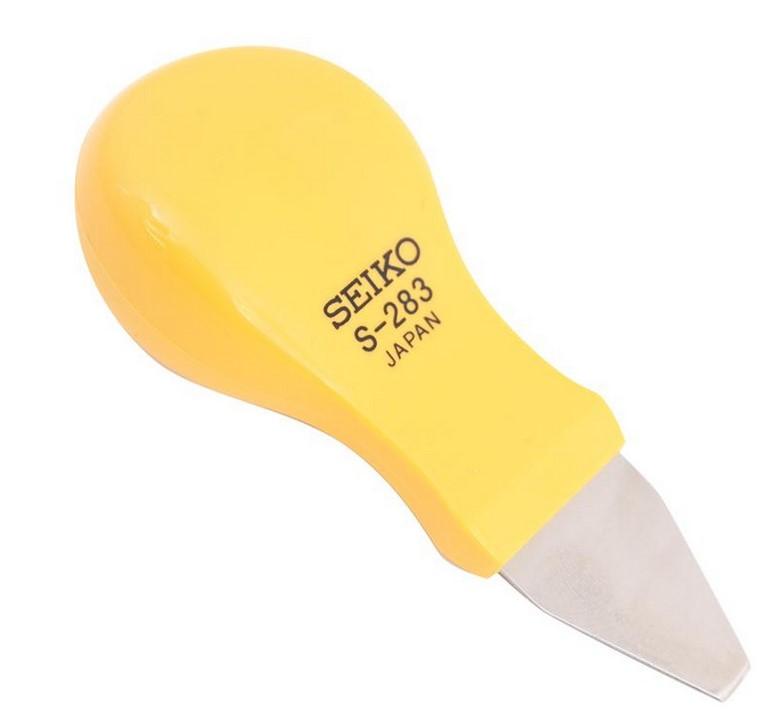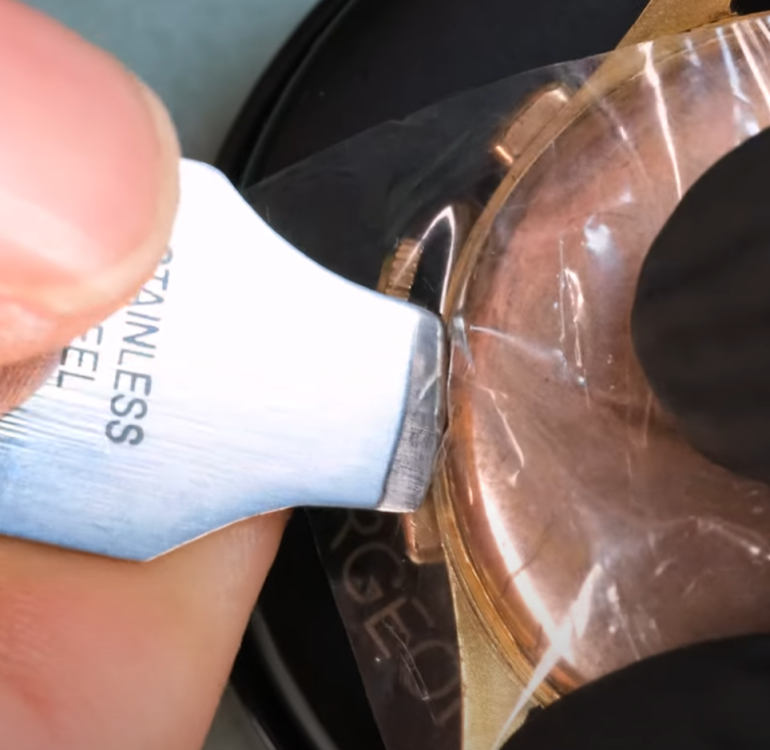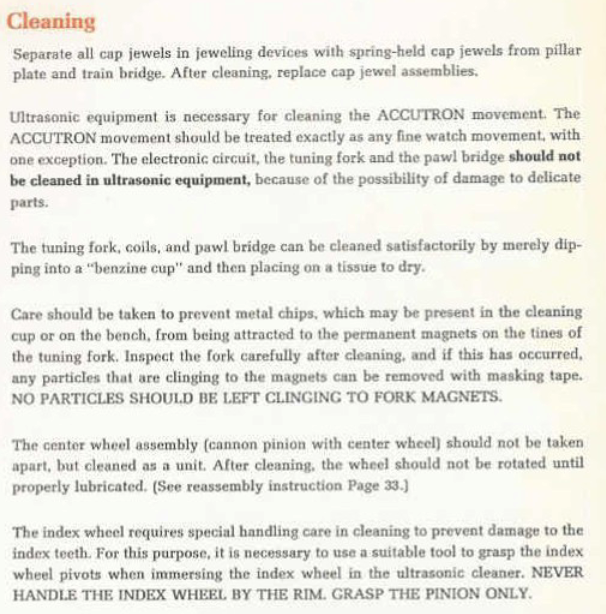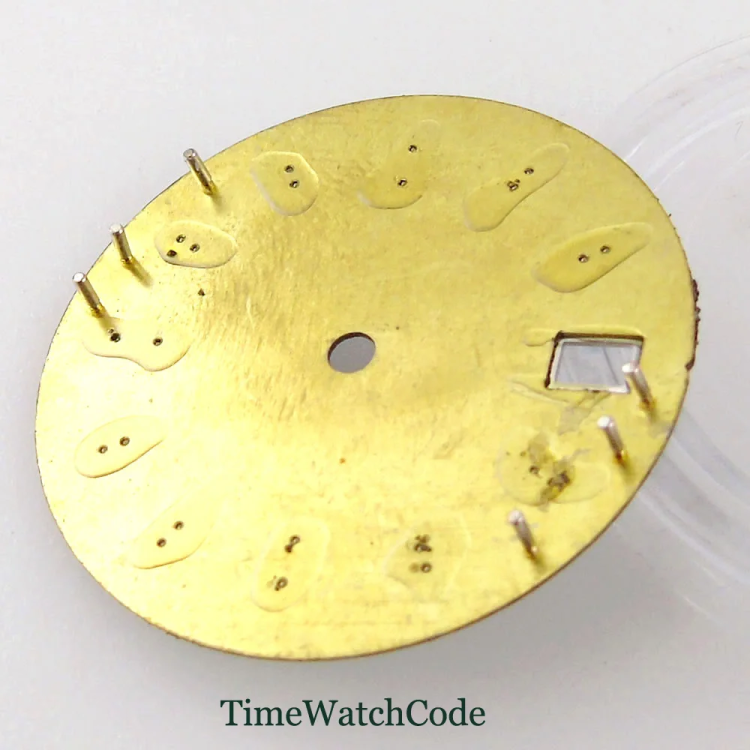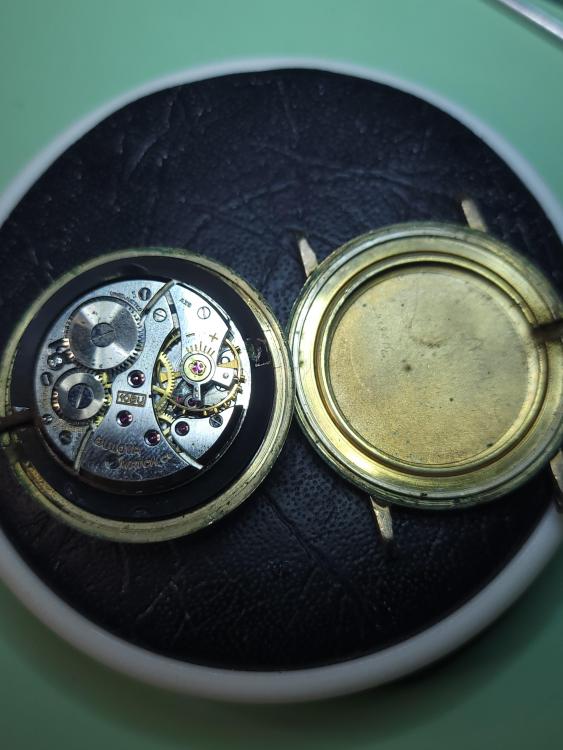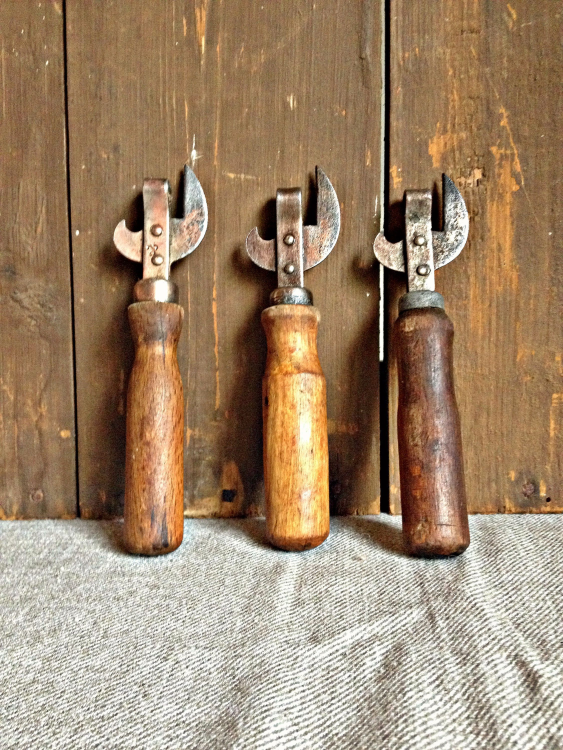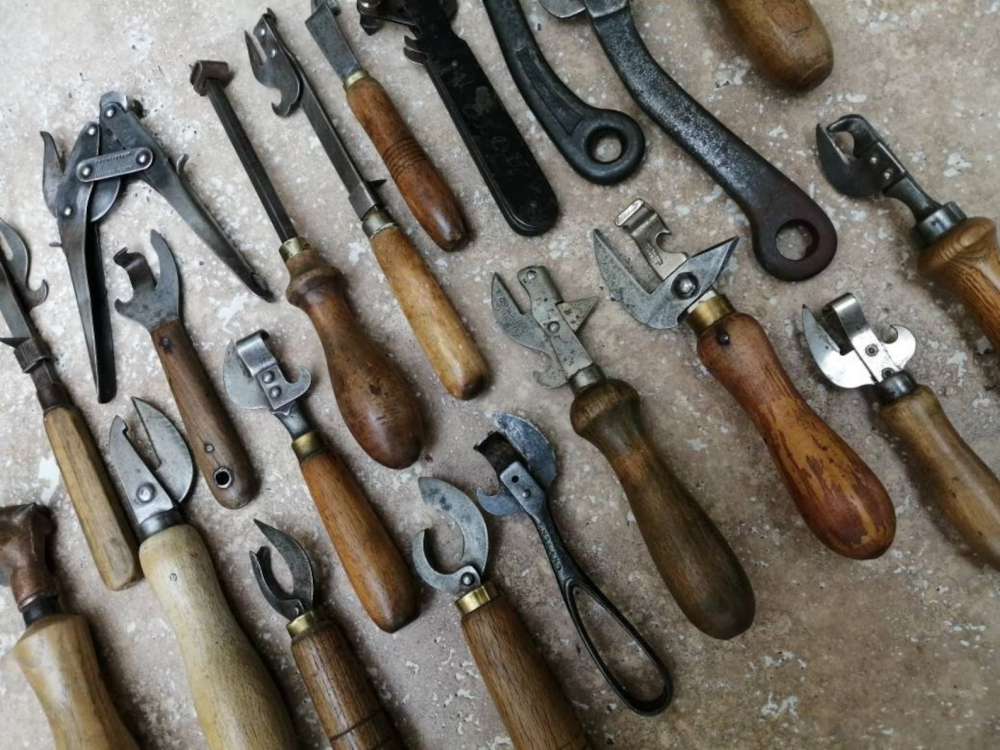Leaderboard
Popular Content
Showing content with the highest reputation on 12/15/23 in all areas
-
Hi the extra pieces are for the night silent mechanism, it needs to shut off at 11pm and come back on at 7.15am. When your L shape lever is on top of the cam that will shut off the chimes, however i find it easier to set it for the 7.15am when lever is just coming off of the cam. Hhope this helps.2 points
-
haven't you noticed how many discussions on this group stayed purely in the subject and don't get hijacked one of the interesting problems and watch repair seems to be lots and lots and lots of variations. For instance isopropyl alcohol there's a YouTube video out there showing the evils of it yet lots of people in the group use it and where I go and work it's the final rinse in a cleaning machine and as far as I can tell we never have any problems from the alcohol. But they're still YouTube video showing how evil and bad it is and it will dissolve all the shellac instantly etc. I believe the same video talked about why it's very bad to ultrasonic leak clean anything with shellac with anything even including commercial solvents and once again my experience with ultrasonic and cleaning watches it works fine of course I don't leave it in there all day. As you pointed out when ultrasonic machines run they typically will heat up the fluid and heat and fluids can be bad with time but even bad things like some alcohols 100% will dissolve shellac and when I was cleaning at home I used one of those alcohols as a final final rinse because the commercial watch rinses don't dry at all. which is why Elmont recommended isopropyl alcohol for the machine at work and I was using the dangerous alcohol that does dissolve shellac but I was only using at the rinse off the rinse for a few seconds and never had a problem. But it's always worth mentioning that you can have a problem or you can have the peculiar set of circumstances where you can have a problem especially with extended soaking or extended cleaning so it's always wise to check the components that are supposed to have shellac to make sure they do. I for instance typically doing vintage pocket watches always check my roller jewel because I never know what it was attached with before just to make sure it's good1 point
-
I'm finding this thread really interesting but I don't have a clue what anyone is talking about. I could Google it but I haven't worked on an Accutron and probably would have to do so to fully understand.1 point
-
There is sometimes a small "lip" in the case where the bezel can be removed with a case opener. You will have to look around (using magnification) the seam where the bezel and case meet for it. I have had good luck with the Seiko type opener. Place plastic bag under the tool to help protect the case.1 point
-
The hairspring looks pretty well twisted right at the stud, which is something I've seen on several watches I've done (and has been the easiest to fix of the hairspring defects I've dealt with). That would cause the hairspring to twist relative to the plane of the balance wheel, possibly rubbing on it or the cock and stopping it. Can we see the balance complete installed directly from the side and front? Your hairspring should be dead parallel to the balance wheel and the balance cock.1 point
-
1 point
-
What You have is Breguet hairspring , the bridge and regulator on it is seem to be for Breguet too. It is possible that someone has changed the entire balance and thus the hairspring with it, and he had to enlarge the diameter of the overcoil as per the regulator and stud hole, but he didn't know what shape is needed The spring should be corrected like the one from ebay photo, this type is widely used in pocket and old wrist watches where the overcoil is on the same high as the center wheel and the wheel is big and no place for the overcoil.1 point
-
Hi judging by the pictures the last one is a breguet style, yours may have been like it but difficult to make a judgment as the others look as though yours may have been so the balance cock stud point and regulator looks like a flat one. Inconclusive I know but without looking at it in the flesh difficult.1 point
-
I put all the small parts and screws in parts baskets then load them into a jar fill with the solution and put the jar into the ultrasonic filled with water.1 point
-
I bought these to work on Accutrons because the are non magnetic. I have many tweezers which I inherited and most are Dumont. I have two #3s I use daily--a sharp pair and a dull pair. Sharp ones for delicate work and the dull pair to muscle things around (bending, shoving, etc.). I love them both...very delicate feel that suits me. I bought a new pair of Dumont 3C last year and was disappointed with the feel. Harder to squeeze...I was too accustomed to my old Dumonts. I bought a cheap pair of Ti tweezers earlier this year. They are not sharp, have hard feel and just not all that useful. So, I was skeptical when I purchased the Dumont 5Ti. Figured they would disappoint. Well, they did not. After one full day of use working on an Accutron, I am very happy with them. Delicate touch, sharp, and light. I would be happier if they were heavier, but they are Titanium, duh. So I highly recommend the Dumont 5Ti tweezers.1 point
-
I reinstall the fork, index wheel and pawl back onto the mainplate. The index and pawl fingers must be turned away from the index wheel to prevent damage. I clean all the parts in L&R #111 and Rinse #3 in my ultrasonic cleaner.1 point
-
Many member have ultrasonic and this expirement is easy to do, and see the result for yourself. Only then a discussion on this subject can have validity and be useful to all. Discussing it here is hijacking this thread. I think Ronson mildly interact with shellac, ultrasonic washes the soften layer away, so a new shellac layer is exposed . Rgds1 point
-
It is safe to use but that depends on how its used. It was established a while ago that the combination of an ultrasonic machine, more so one that is used with added heat ( and they do generate heat whether the heat function is used or not ) that the agitation can remove shellac in a relatively short space of time again more so in a US that is not specifically designed for cleaning watch parts.The age of the shellac can also make a difference, so OH is also correct in stating it can be left overnight in a static jar, something I've done many times. Alex from about time has a video on this exact subject, i also did the same tests with more or less the same results, for this reason of unknown variables i always hand clean the balance and lever in Perc unless the balance has a friction fitted impulse pin. Haha believe me i have taken much worse photos, i can add that your subsequent ones were better1 point
-
Stuart2 has hit the nail on the head. I have two of them myself they are extremely well made movements. Some are also fitted with a silent running platforms. I myself collect Elliot clocks I have five other time pieces all different types of cases.1 point
-
Nice to have you back. We all need to take a break at some point in our lives.1 point
-
1 point
-
@Nucejoe I'm confused, are you saying that the danger to the shellac is from the Ronson (naphtha) or with the ultrasonic or both or....?1 point
-
Greetings and welcome back What types of watches do you prefer, there is a great supplier of Seiko and Citizen in the Philippines that I use quite a lot on eBay, some great prices, some of them are in rough shape, but good for a challenge!1 point
-
Thanks Stuart2, I was beginning to think along those lines. I realise as well that I had the silence lever in the wrong position. Have also found that the chime cam has to be just right on its arbor (not too far in or out) to prevent catching on other levers. Have made some progress and will persevere!1 point
-
@mcoulton When I repair loose markers I glue them from the opposite side of the dial, I first replace the marker on the front of the dial in its correct position and nine times out of ten the friction will keep it in place long enough to let me turn over the dial to the back, I then use a liberal (well, liberal in watch terms) amount of 5 min epoxy on the feet that are poking through the dial. Using this method there is very little chance that any stray glue/epoxy will make it through to the front of the dial. Once dry you can remove any excess adhesive with some wet and dry paper if there is any concern that it will get in the way of anything. I assume this method would work in your case also. If you look at the back of a dial you can see that this is how it was done when they made the dial, you can see the glue dots around the feet of the markers and date window etc. quick example I found on the web to illustrate my point: In your case I wouldn't try to remove any of the old glue under where the ring was on the front of the dial, If you use the method above the ring will cover this up, and it won't get in the way as it wasn't in the way previously - no need to make life hard for yourself1 point
-
So check if any shellac is left on palletes, nevertheless, TG shows both pallete are firmly intact. You are likely to see much improved tg graph once hairspring coil is centered which should move outer coil away from the stud. Pegging always yields better results. Rgds1 point
-
I just glued some dial markers back on using Epoxy 330. It has a decent working time and unlike some other glues/epoxies I've used it handles really well so that you can pick it up with an oiler and when you place it it doesn't tend to string up on you.1 point
-
I did disassemble the entire watch and used Ronsonol and an ultrasonic machine to clean everything. I replaced the mainspring with a new one. I lubricated the exit pallet stone and allowed the watch to run several rotations of the escape wheel then removed the pallet fork to clean it again. Visually the watch has good amplitude. The watch ran 1.5-2 minutes slow in all positions after 24 hours (I hadn't made any further adjustments) with lower amplitude and low beat error. Most of the variation is between horizontal and vertical. I did not realize that. I already knew that IPA will dissolve shellac but had been led to believe that Ronson is safe to use. I replaced the mainspring with a new one. I was left impressed I installed the balance on the mainplate and cleaned it in the ultrasonic for around 4 minutes. I did not clean the pallet in ultrasonic, only soaked it.1 point
-
Its a poor quality, but as Neven said , polish the pivots, thats all it needs. Rgds1 point
-
We were talking about Ronson not being shellac friendly. Lets help fix OP watch, the subject was erratic tg reading. Rgds1 point
-
See, the pivot is like a pivot of balance staf, the shoulder is rounded. The tip must rest on the cap stone, so if the capstone is removed, big axial free play will be there and even the down side pivot may go out of the hole. Why? Ask the manufacturer... For prestige may be. But on dial side no cap stone and normal cylindrical pivot in normal jewel1 point
-
This one has never been riveted and used, but the spare parts latest production in post USSR Russia was on lo level of quality. You can burnish the pivots a little after riveting the staff and that's all.1 point
-
Sorry, @rehajm! I totally spaced out on replying to you. Yes, the case is very thin and splits along the winder line. Both of the cases I have are very chewed up on the side opposite the winder because the metal is so thin there. Here's a shot from the thread I posted on my other Bulova President ("P" model).1 point
-
1 point
-
That spring holds it so securely around the edges, I doubt that there is any shock absorbing function. I wonder if it would be possible to modify a circlip to replace this spring. Has anyone tried making a shock spring?1 point





